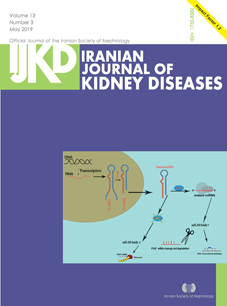Prevention of Contrast-induced Nephropathy in Patients with Chronic Kidney Disease Undergoing Elective Coronary Angioplasty or Angiography with Sodium Potassium Citrate Solution, a Double Blind Randomized Clinical Trial
Abstract
Introduction. Contrast-induced nephropathy (CIN) is a frequent complication of contrast exposure. A recent study suggested that Na/K citrate might have a preventive role. We investigated the efficacy of Na/K citrate to prevent CIN in patients with renal dysfunction undergoing coronary intervention.
Methods. The randomized, double-blind, placebo-controlled trial included 201 patients with estimated creatinine clearance < 90 mL/ min, randomized to receive oral Na/K citrate plus saline infusion (treatment group, 104 patients) or oral water plus saline infusion (placebo group, 97 patients). CIN was defined as an absolute increase of serum creatinine ≥ 0.5 mg/dL or a relative increase ≥ 25% or a relative decrease of estimated GFR ≥ 25% within 5 days.
Results. CIN occurred in 22 patients (12.29%); 10 (11%) in treatment group and 12 (13.6%) in placebo group (P > .05). Post-exposure Cr values were not significantly different between the two groups (1.18 ± 0.28 mg/dL in the placebo vs. 1.15 ± 0.29 mg/dL in the treatment group, P > .05). CIN-negative patients in the treatment group showed a significantly higher increase in urine pH than that of CIN-positive patients (1.642 ± 0.577 vs. 1.20 ± 0.422, P < .05).
Conclusion. Na/K citrate solution is not effective for prophylaxis of CIN in patients with renal dysfunction. However, a probable preventive effect might exist in a subgroup of patients with at least 1.6 units increase in urine pH values following Na/K citrate administration.


